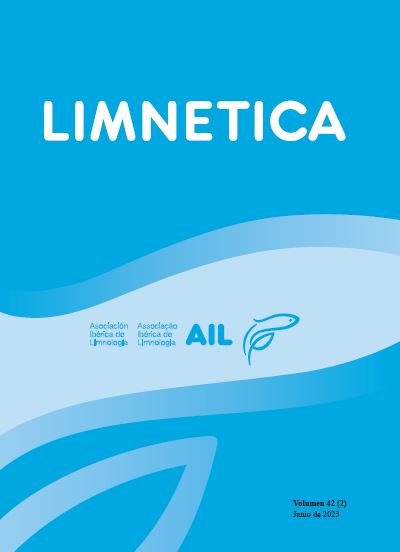Land-use effects on aquatic macroinvertebrate diversity in subtropical highland grasslands streams
Resumen
Knowledge of the frequency and occurrence of macroinvertebrates throughout landscapes may clarify the effects of anthropic impacts on aquatic systems and help guide conservation actions for watersheds. We evaluated macroinvertebrate α and β diversity in streams in four different subtropical phytophysiognomies: highland grasslands with arboreal riparian vegetation, highland grasslands without arboreal riparian vegetation, mixed ombrophilous forest and silviculture. We also evaluated how environmental factors influence α diversity. We sampled macroinvertebrate communities (by Surber sampler), litter input (by nets) and physicochemical variables of the water (by multiparameter and chemical analysis) at 10 sites in riparian zones of a highland system. A total of 2124 individuals were sampled representing 41 taxa, with high α and β diversity in mixed ombrophilous forest. The results indicate that environmental heterogeneity increases food resource availability, as well as macroinvertebrate diversity. Furthermore, the β diversity was found to increase with distance among the unconnected streams. Areas of silviculture had the highest density values among the sampled areas due high organic material stock in the soil. Therefore, higher leaf litter input may decrease the toxicity effect of secondary compounds released by leaf plant decomposition compared to environments with low systemic leaf litter input, such as highland grasslands. The presence of arboreal riparian vegetation drives canopy openness, water temperature, dissolved oxygen, and orthophosphate in streams, which control the frequency and occurrence of benthic macroinvertebrates. Homogeneous systems, as naturally observed in highland grasslands, plus high canopy openness decrease macroinvertebrate richness and density. The naturally low richness of highland grasslands, although with endemic species, may be an important guideline for legislation on anthropic impacts, management, and conservation of streams in this specific subtropical zone.
Descargas
Publicado
Número
Sección
Licencia
Los autores que publican en esta revista están de acuerdo con los siguientes términos:
- Limnetica está bajo una licencia de Creative Commons Atribución-NoComercial 4.0 Internacional.
b. Los autores pueden establecer por separado acuerdos adicionales para la distribución no exclusiva de la versión de la obra publicada en la revista (por ejemplo, situarlo en un repositorio institucional o publicarlo en un libro), con un reconocimiento de su publicación inicial en esta revista.
c. Se permite y se anima a los autores a difundir sus trabajos electrónicamente (por ejemplo, en repositorios institucionales o en su propio sitio web) antes y durante el proceso de envío, ya que puede dar lugar a intercambios productivos, así como a una citación más temprana y mayor de los trabajos publicados (Véase The Effect of Open Access) (en inglés).


